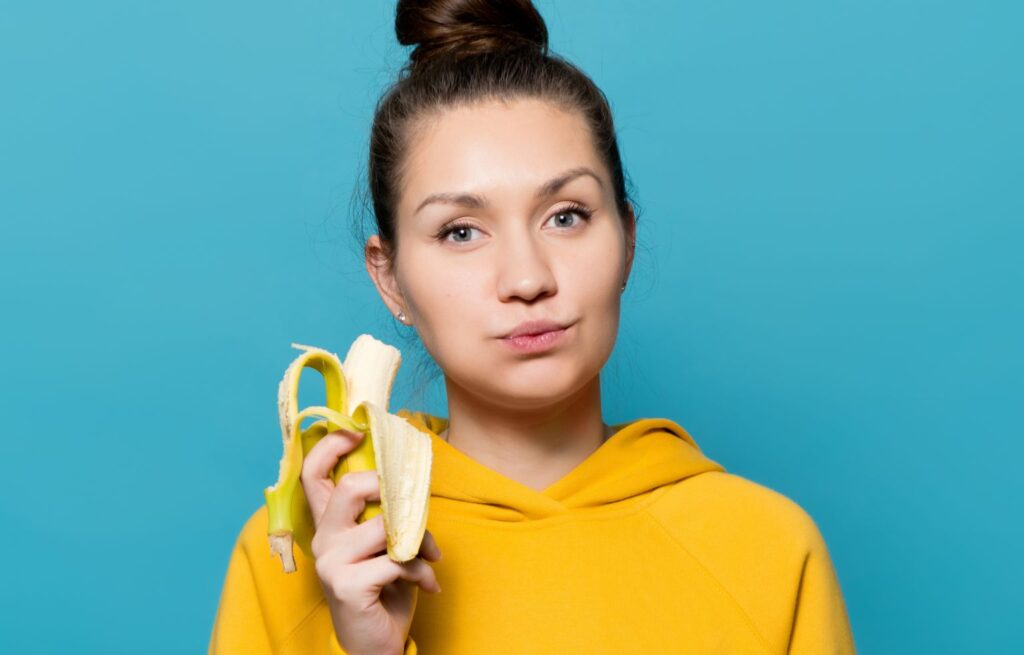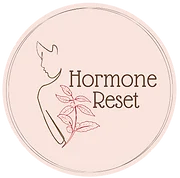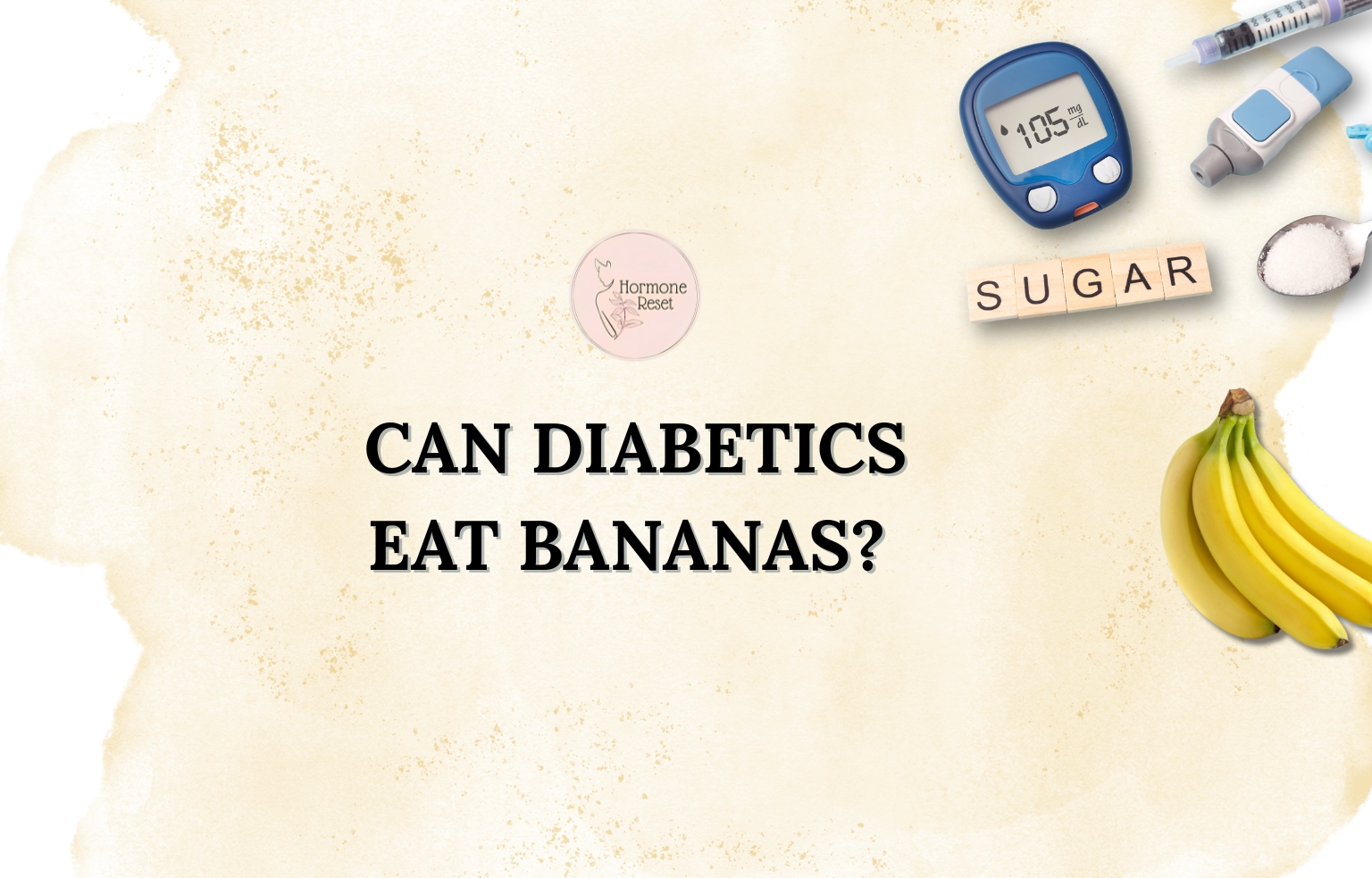Bananas—bright, portable, and delicious—are a favourite fruit for millions. But if you have diabetes, you’ve likely heard conflicting advice: some say bananas are too sugary, others insist they’re packed with nutrients your body needs. So, what’s the real story? Can you enjoy bananas without worrying about your blood sugar? In this blog, we’ll peel back the myths and reveal the facts, exploring how bananas truly affect diabetes. Plus, you’ll discover how the Hormone Reset Functional Medicine Approach can help you make informed, confident choices—so you can enjoy food and life without fear.
Understanding Diabetes
Diabetes is a chronic condition where your body either doesn’t produce enough insulin or can’t use it effectively. Insulin is the hormone that helps move sugar from your blood into your cells for energy. When this process breaks down, blood sugar levels rise, leading to symptoms like fatigue, frequent urination, and increased thirst. Over time, unmanaged
diabetes can damage your heart, kidneys, nerves, and eyes. Managing diabetes is about more than just food—it’s about balancing nutrition, exercise, stress, sleep, and medication to keep your blood sugar in a healthy range.
Bananas: Nutrition Profile and Health Benefits

Bananas are packed with nutrients that support overall health, including potassium (which helps control blood pressure), vitamin B6 (for brain health and metabolism), vitamin C (an antioxidant), magnesium, and dietary fiber. A medium banana contains about 3 grams of fiber, which slows digestion and helps prevent rapid blood sugar spikes. Bananas also contain antioxidants like dopamine and catechin, which help fight inflammation and protect your cells from damage. The resistant starch in less ripe bananas acts as a prebiotic, feeding good gut bacteria and supporting digestive health.
Myths About Bananas and Diabetes
Myth 1: Bananas are too sugary for diabetics.
Bananas do contain natural sugars, but they also offer fiber and nutrients that help modulate blood sugar impact. The sugar in bananas is not the same as added sugars found in processed foods.
- Myth 2: All bananas have the same effect on blood sugar.
The effect of a banana on blood sugar depends on its ripeness, size, and what you eat it with. Green bananas have more resistant starch and less sugar, while ripe bananas are sweeter and can raise blood sugar faster.
Myth 3: Diabetics should avoid bananas completely.
There’s no need to banish bananas from your diet. Most people with diabetes can enjoy bananas in moderation, especially when paired with protein or healthy fats to slow sugar absorption.
Facts: How Bananas Affect Blood Sugar
Bananas are a source of carbohydrates, which are broken down into glucose and absorbed into the bloodstream. However, the fiber and resistant starch in bananas slow this process, leading to a more gradual rise in blood sugar compared to highly processed snacks. The glycemic index (GI) of bananas varies with ripeness—less ripe bananas have a lower GI, while fully ripe bananas have a higher GI. Pairing bananas with protein (like nut butter or yogurt) or healthy fats can further slow down the sugar absorption, helping to prevent spikes and crashes in blood glucose.
Glycemic Index and Glycemic Load: What Do They Mean for Bananas?
- The glycemic index (GI) measures how quickly a food raises blood sugar.
- Green bananas have a GI of 31–48 (low).
- Ripe bananas have a GI of 51–62 (medium).
- Glycemic load (GL) considers both the GI and carbohydrate content in a serving.
- GL provides a more practical measure for real-world eating.
- A small banana has a moderate GL.
- Small bananas can fit into a balanced diet for most diabetics when eaten in moderation and as part of a meal.
Banana Ripeness: Why It Matters for Diabetics
As bananas ripen, their starches convert into sugars, making them taste sweeter and increasing their GI. Green or slightly yellow bananas are higher in resistant starch and fiber, which slow down sugar absorption and help keep blood sugar stable. Ripe bananas, while still nutritious, are digested faster and can raise blood sugar more quickly. For people with diabetes, choosing less ripe bananas and combining them with other foods can help maintain better glycemic control.
Portion Control: How Much Banana is Safe?
Portion size is crucial for managing blood sugar. A small or medium banana (about 100–120 grams) is generally considered a safe portion for most people with diabetes. Eating larger bananas or multiple servings at once can lead to higher blood sugar spikes. It’s also important to pay attention to your body’s response—monitor your blood sugar before and after eating bananas to see how you react, and adjust your portion size accordingly.
Smart Ways to Eat Bananas with Diabetes
- Pair with protein or healthy fats: Eating bananas with foods like nuts, seeds, or yogurt slows digestion and sugar absorption.
- Add to balanced meals: Sliced bananas in oatmeal or smoothies can provide sustained energy without causing sugar spikes.
- Avoid on an empty stomach: Eating bananas alone can cause a quicker rise in blood sugar; always pair with other foods for balance.
- Spread fruit intake: Don’t consume all your fruit servings at once—spreading them throughout the day helps keep blood sugar stable.
- Monitor your response: Keep a food diary and check your blood sugar to learn how bananas affect you personally. A CGM can also help in understanding how the body responds to bananas and different foods.
Bananas vs. Other Fruits: A Comparison
| Fruit | Glycemic Index | Fiber (g/100g) | Sugar (g/100g) | Notable Nutrients |
| Banana | 31–62 | 2.6 | 12 | Potassium, B6, C, Mg |
| Apple | 36 | 2.4 | 10 | Vitamin C, Potassium |
| Orange | 43 | 2.2 | 9 | Vitamin C, Folate |
| Grapes | 53 | 0.9 | 16 | Vitamin K, C, Antioxidants |
Bananas are comparable to other fruits in terms of sugar and fiber, but their potassium content is especially beneficial for heart health—a major concern for people with diabetes.
The Role of Fiber and Resistant Starch in Bananas
Fiber and resistant starch are key components that make bananas a smart choice for diabetes management. Fiber slows the absorption of sugar, preventing rapid spikes in blood glucose. Resistant starch, found in higher amounts in green bananas, acts like soluble fiber and feeds beneficial gut bacteria. This not only helps with blood sugar control but also supports gut and immune system health, which is increasingly recognized as important for metabolic and hormonal balance.
Bananas and Gut Health: The Prebiotic Effect
Bananas, especially when less ripe, are a natural prebiotic—meaning they feed the beneficial bacteria in your gut. A healthy gut microbiome is linked to improved insulin sensitivity, reduced inflammation, and better hormone regulation. By supporting gut health, bananas can indirectly help with blood sugar management and overall metabolic wellness.
The Hormone Reset Functional Medicine Approach: Root Cause Healing
Hormone Reset’s Functional Medicine Approach is about more than just blood sugar numbers—it’s about restoring balance to your entire body. Here’s how Hormone Reset stands apart:
- Comprehensive Health Evaluation: Your journey begins with a detailed health history and targeted lab tests to uncover hidden imbalances, including hormonal, metabolic, and gut health factors.
- Root Cause Analysis: Instead of just managing symptoms, Hormone Reset identifies the underlying causes of your diabetes, such as chronic inflammation, stress, poor gut health, or hormonal imbalances.
- Personalized Nutrition: You’ll receive a custom nutrition plan tailored to your unique needs, including guidance on how to safely enjoy foods like bananas. This plan takes into account your lifestyle, preferences, and metabolic health.
- Ongoing Support: Access to experienced clinicians and a supportive community ensures you have guidance and motivation every step of the way.
- Mind-Body Wellness: The program includes stress management techniques, meditation, and a guided detox to support your body’s natural healing abilities.
- Physical Activity Guidance: Expert advice on exercise and yoga helps you integrate movement strategies that work with your nutrition plan for optimal results.
- Empowerment and Education: Hormone Reset empowers you to understand your body’s signals, make informed choices, and sustain healthy habits for life.
By addressing the root causes of metabolic imbalance, Hormone Reset helps you achieve lasting improvements in blood sugar control, energy, and overall well-being. Bananas—and many other foods—can be part of your journey to vibrant health, not just something to fear or avoid.
Bananas, Balance, and the Power of Hormone Reset
Bananas don’t have to be the enemy for people with diabetes. With the right knowledge—understanding ripeness, portion control, and smart food pairing—you can enjoy bananas as part of a balanced, nourishing diet. The Hormone Reset approach goes beyond simple “yes” or “no” answers, empowering you to address the root causes of blood sugar imbalances and build a lifestyle that supports your long-term health. By focusing on your unique needs and fostering true metabolic harmony, you can savour the foods you love and live vibrantly—even with diabetes.
References
https://redcliffelabs.com/myhealth/diabetes/is-banana-good-for-diabetes-check-the-facts/
https://www.healthline.com/nutrition/bananas-diabetes
https://glycemic-index.net/banana/
https://www.signos.com/blog/glycemic-index-of-banana
https://www.medicoverhospitals.in/articles/can-diabetics-eat-bananas





Leave a Reply